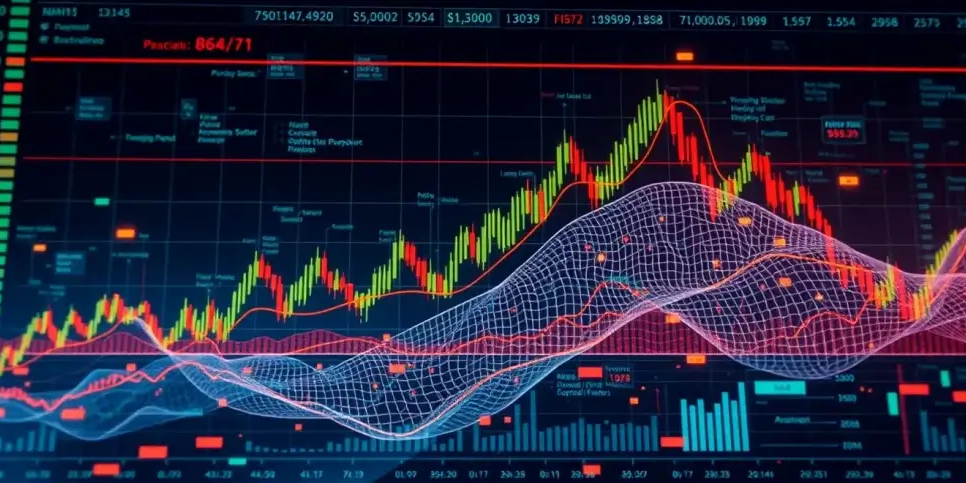Subscribe to ECOS
Receive the latest updates directly to your inbox.

Cryptocurrency Staking: How it Works and How to Earn in 2025
Cryptocurrency staking is becoming an increasingly popular way for digital asset investors to earn passive income. Unlike traditional investment methods, such as bank deposits, staking allows users to earn on their investments while supporting the operation of the blockchain. In 2024, many cryptocurrencies are transitioning to the Proof of Stake (PoS) algorithm, making staking available to a broader audience. In this guide, we will closely examine what staking is, how it works, and how you can start earning from this process.

Altseason: What it is and how to make money on altcoin growth
The cryptocurrency market is full of opportunities for profit. One of the most interesting periods is the altseason. This is the time when altcoins demonstrate active growth, often outpacing Bitcoin. But how can one tell when altseason has begun? Most importantly, how can one profit from it? In this article, we will analyze what altseason is, its signs, and strategies for successful investments.

What is a token: Understanding types and applications in economy and technology
Tokens have become an integral part of the modern digital world, playing a significant role in the economy and technologies. They represent digital assets that can be used for various purposes, from transactions to accessing services. In this article, we will explore what a token is, its types and examples, as well as how tokens influence the economy and technology. Understanding tokens will help you navigate the world of cryptocurrencies and blockchain, and reveal their potential for business and investment.

ERC-20 Tokens: Understanding Their Role and Functionality in Ethereum
ERC-20 tokens are the foundation of the Ethereum ecosystem. They allow for the creation of cryptocurrencies and decentralized applications that operate under a unified set of rules. This standard simplifies life for developers and users alike. In this article, we will thoroughly examine how these tokens work, their history, advantages, and limitations.

Paper Cryptocurrency Wallet: How to Create and Store Securely
Cryptocurrencies require reliable protection, and a paper wallet is one of the safest options! It is simply a physical document with a private and public key that is immune to hackers and viruses. It’s easy to create and store, but the main thing is not to lose it! Paper can suffer from water, fire, or just tearing, so be careful and keep it in a secure place.

Slippage in Crypto Trading: Causes, Risks, and How to Minimize It
Slippage in crypto trading is a term that sparks concern for both newcomers and seasoned investors, especially in the fast-moving world of digital assets. Imagine placing a buy order at a specific price, only to see the order filled at a higher cost — the difference is slippage, and it can eat into your profits or magnify your losses. With volatile markets, ever-changing liquidity, and a wide array of trading fees, managing slippage has become an essential skill in the crypto space. As exchanges and decentralized platforms continue to evolve, understanding the nuances behind slippage — from the role of low liquidity to the often-overlooked impact of trading fees — is crucial for protecting your capital. In this comprehensive guide, you’ll discover what causes slippage in crypto trading, how it affects your trades, and the best strategies to minimize its impact. Whether you’re executing a small trade or planning to move significant sums, this article empowers you with actionable insights and real-world examples. Read on to uncover the hidden dynamics of crypto trading and learn how even small price differences can shape your long-term results.

Funding in Cryptocurrency: Understanding Funding Principles and Their Role in Markets
Funding is a crucial mechanism in the cryptocurrency market that directly affects the profitability of your trades. It may not be visible on charts, but it can quietly eat away at your balance or, conversely, generate passive income. Understanding the principles of funding is key to efficient position management, especially if you are trading futures. In 2025, the market situation is becoming increasingly volatile, and the funding rate is often changing, making this topic even more relevant.

APR in Cryptocurrency: Understanding Its Importance and Functioning
APR (Annual Percentage Rate) is a key financial term that plays an important role in the world of cryptocurrencies. It indicates the rate at which investors can earn on their investments over the course of a year and is an important indicator of profitability for market participants. For those engaged in staking or providing liquidity on DeFi platforms, understanding APR allows for assessing potential profits and comparing different investment opportunities. In the context of the highly volatile cryptocurrency market and the variety of available projects, knowledge of APR becomes critically important for making informed investment decisions.

Cryptocurrency Arbitrage: How to Earn from Price Differences
Cryptocurrency arbitrage is a trading strategy based on the price difference of the same cryptocurrency across different exchanges. It allows traders to profit without the need for long-term investments or in-depth technical market analysis.
